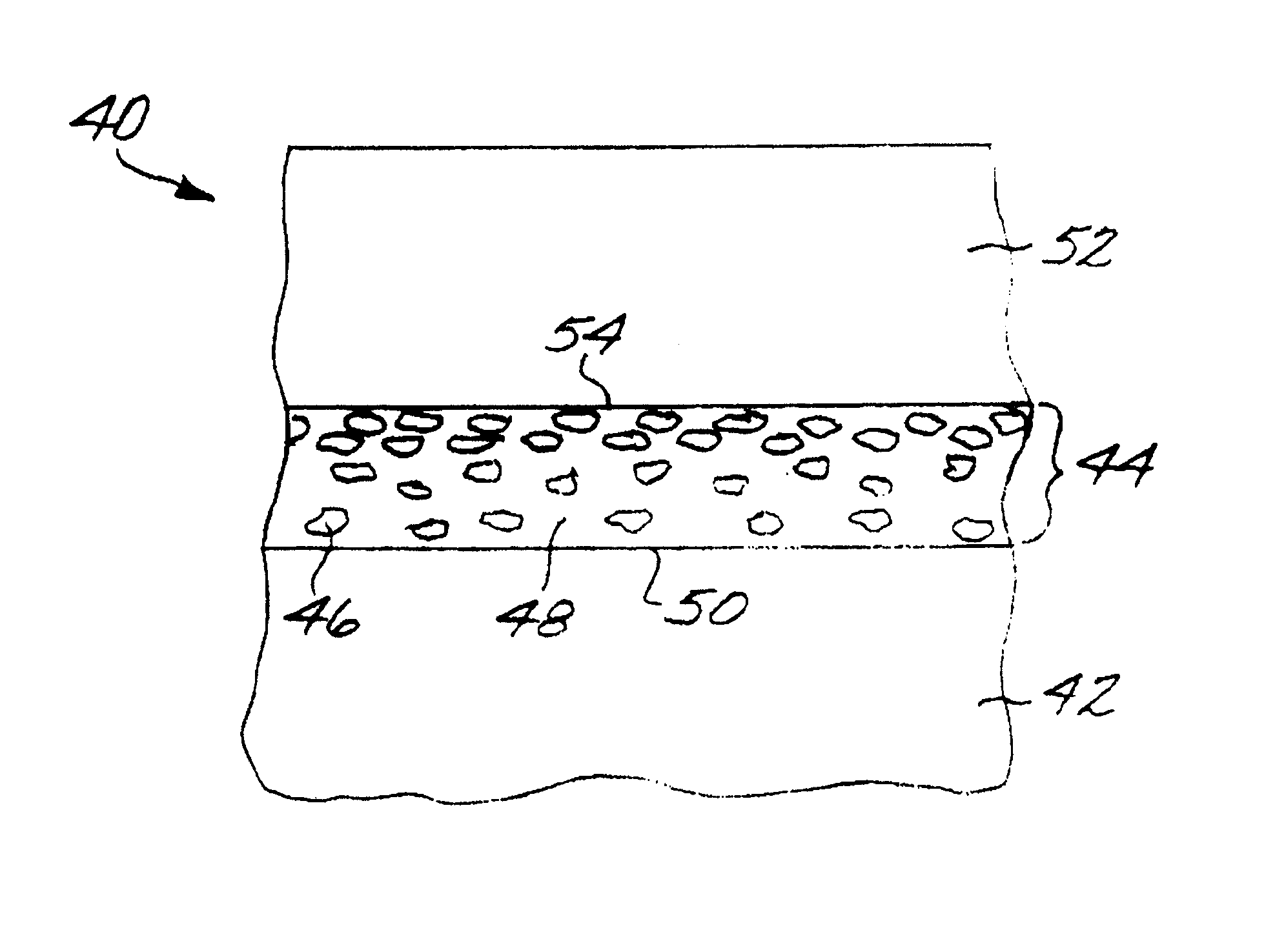Thermal protection of an article by a protective coating having a mixture of quasicrystalline and non-quasicrystalline phases
a protective coating and quasi-crystalline technology, applied in the field of aircraft gas turbines, can solve the problems of low thermal conductivity and non-reduction effect of thermal protective coatings, and achieve the effect of reducing potential damage and good protection of substrates against oxidation
- Summary
- Abstract
- Description
- Claims
- Application Information
AI Technical Summary
Benefits of technology
Problems solved by technology
Method used
Image
Examples
Embodiment Construction
[0022]FIG. 1 depicts a component 18 of a gas turbine engine, and specifically a gas turbine blade 20. The use of the present invention extends to other applications as well, for example other components of gas turbine engines such as gas turbine vanes as well as with other articles. The gas turbine blade 20 has an airfoil 22 against which a flow of hot combustion gas impinges during service operation, a downwardly extending shank 24, and an attachment in the form of a dovetail 26 which attaches the gas turbine blade 20 to a gas turbine disk (not shown) of the gas turbine engine. A platform 28 extends transversely outwardly at a location between the airfoil 22 and the shank 24 and dovetail 26. The platform 28 has a top surface 30 adjacent to the airfoil 22, and a bottom surface 32 (sometimes termed an “underside” of the platform) adjacent to the shank 24 and the dovetail 26.
[0023]The entire gas turbine blade 20 is preferably made of a nickel-base alloy that also contains aluminum and...
PUM
| Property | Measurement | Unit |
|---|---|---|
| Percent by mass | aaaaa | aaaaa |
| Percent by mass | aaaaa | aaaaa |
| Thickness | aaaaa | aaaaa |
Abstract
Description
Claims
Application Information
 Login to View More
Login to View More - R&D
- Intellectual Property
- Life Sciences
- Materials
- Tech Scout
- Unparalleled Data Quality
- Higher Quality Content
- 60% Fewer Hallucinations
Browse by: Latest US Patents, China's latest patents, Technical Efficacy Thesaurus, Application Domain, Technology Topic, Popular Technical Reports.
© 2025 PatSnap. All rights reserved.Legal|Privacy policy|Modern Slavery Act Transparency Statement|Sitemap|About US| Contact US: help@patsnap.com



